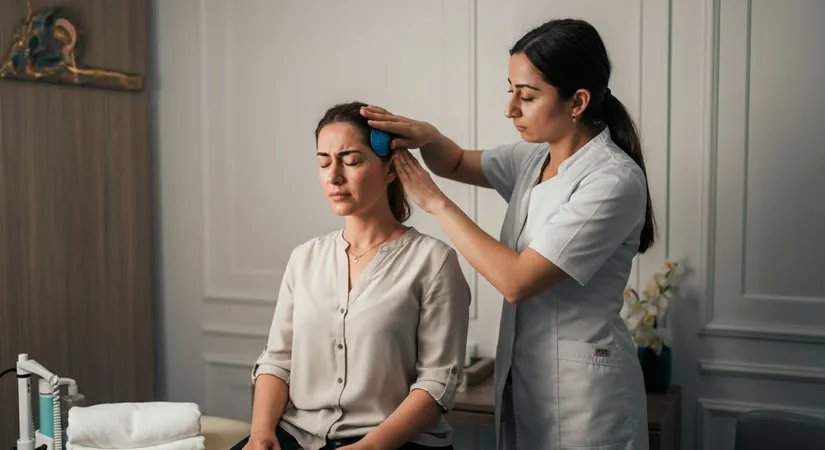Pressure Points: Unlocking the Secrets to Natural Healing
Discover the secret of pressure points and unlock the potential of natural healing.
Natural healing through pressure points has garnered much attention due to its non-invasive methods and holistic approach to wellbeing. This ancient practice involves stimulating specific points on the body, commonly known as pressure points, which are believed to correspond to different organs and systems within the body. By understanding and utilizing these points, one can potentially alleviate pain, reduce stress, and enhance overall health.
Understanding the Basics: What Are Pressure Points?
Pressure points are specific areas on the body that, when stimulated, can produce therapeutic effects. These points are often used in practices such as acupressure and acupuncture, where the application of pressure or needles can help alleviate various ailments. The concept of pressure points is rooted in traditional Chinese medicine, where it is believed that energy, or "qi," flows through pathways in the body known as meridians. By manipulating these points, practitioners aim to balance the body's energy and promote healing.
In the context of pressure point therapy, these points are utilized to relieve pain, reduce tension, and improve overall well-being. For instance, pressure points for headache relief are commonly targeted to ease tension headaches and migraines. Understanding how to use pressure points for pain relief involves learning the specific locations and techniques for applying pressure effectively. This knowledge can empower individuals to manage their discomfort naturally and enhance their quality of life.
Moreover, pressure points are not only used for pain relief but also for improving circulation, boosting the immune system, and reducing stress. Each pressure point has a unique function and can be stimulated in various ways, such as with fingers, elbows, or specialized tools. By incorporating pressure point therapy into your wellness routine, you can experience a holistic approach to health that complements other treatments and lifestyle practices.
Effective Techniques: How to Use Pressure Points for Pain Relief
Utilizing pressure points for pain relief involves a variety of techniques, primarily focusing on acupressure and reflexology. These practices are centered around the application of firm, steady pressure to specific points on the body, known as acupressure points, to alleviate tension and enhance circulation. By targeting these pressure points, individuals can experience significant relief from various types of pain, including headaches, muscle aches, and chronic discomfort.
One of the most effective techniques in pressure point therapy is identifying the precise location of pressure points and applying the correct amount of pressure. For instance, to relieve a tension headache, one might focus on the pressure points located at the base of the skull or between the eyebrows. These points, when stimulated correctly, can help in reducing headache symptoms and promoting relaxation. Understanding how to use pressure points for pain relief requires practice and knowledge of the body's meridian system, which is integral to traditional Chinese medicine.
In addition to manual techniques, tools such as acupressure mats or massage rollers can be used to stimulate pressure points more effectively. These tools can provide consistent pressure and are particularly useful for individuals who wish to incorporate pressure point therapy into their daily routine. By learning and practicing these techniques, individuals can take an active role in managing their pain and improving their overall well-being naturally.
Beyond Pain Relief: Exploring Pressure Points for Stress and Anxiety
Pressure points can be powerful tools for managing stress and anxiety. By applying pressure to certain points, such as those located in the hands and feet, one can promote relaxation and emotional balance. These acupressure points are integral to pressure point therapy, offering a natural method to alleviate mental tension and enhance overall well-being. For instance, the "Heart 7" point on the wrist is known for its calming effects, helping to reduce anxiety and improve sleep quality. Understanding how to use pressure points for stress relief can empower individuals to take control of their mental health in a holistic manner.
Incorporating pressure point therapy into your daily routine can significantly impact your stress levels. Techniques such as gentle circular motions or firm, steady pressure on specific points can stimulate the body's natural relaxation response. This practice not only helps in reducing stress but also boosts the immune system and improves circulation, contributing to a healthier lifestyle. By learning the locations and functions of these pressure points, individuals can develop personalized strategies to manage stress and anxiety effectively.
Moreover, pressure points for stress relief are accessible and easy to incorporate into various settings, whether at home, work, or on the go. Tools like acupressure rings or stress balls can be used to apply pressure discreetly, providing relief whenever needed. By exploring the potential of pressure points beyond pain relief, individuals can enhance their emotional resilience and foster a sense of calm and balance in their daily lives.
